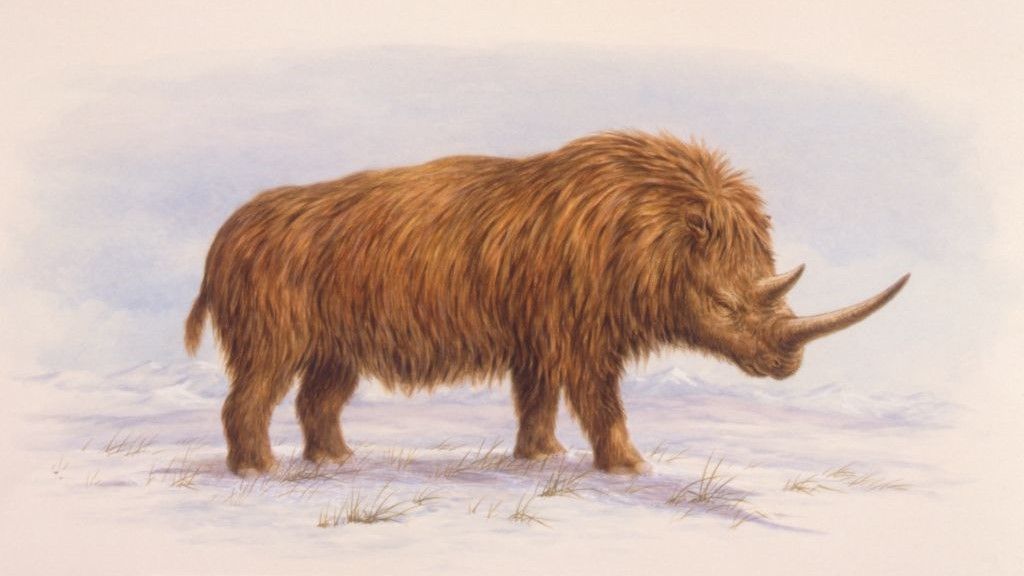Scientists have discovered the deep-frozen, mummified carcass of a young woolly rhinoceros in the ice of Siberia, which was feasted on by predators tens of thousands of years ago.
The right side of the woolly rhinoceros is well preserved, with patches of skin and fur remaining intact over the millennia, but its left side shows that the youngster was injured in the hours before or after its death.
“From the top of the thigh to the level of the shoulder blade, [the carcass] has been severely destroyed,” researchers from the Russian Academy of Sciences and the Academy of Sciences of the Republic of Sakha wrote in a study documenting the corpse, published July 1 in the journal. Doklady Earth Sciences. “The internal body cavity is exposed and most of the intestines are missing.”
From the dismembered corpse, “it is clear that the left side of the mummy was eaten by predators,” the researchers wrote. The remains of small crustaceans embedded in the fur also indicate the woolly rhinoceros (Coelodonta antiquitatis) died in a shallow pool of water, the team noted.
Radiocarbon dating suggests that the young woolly rhinoceros died and froze more than 32,000 years ago.
Woolly rhinos roam the Arctic tundra between 460,000 and 12,000 years agolong the last ice age. They were large beasts and the second largest herbivores in the steppe ecosystem after mammoths woolly mammoths (Mammuthus primigenius). Like mammoths, woolly rhinos were well-adapted to cold climates thanks to their coarse fur – but scientists still know very little about these prehistoric animals, according to the study.
Related: ‘Closer than people think’: Woolly mammoth ‘extinction’ is getting closer to reality – and we have no idea what happens next
The rare discovery of a nearly intact woolly rhinoceros has helped researchers fill in some of those gaps.
Scientists dug up the corpse in August 2020 from the ice-covered banks of the Tirekhtyakh River in Russia’s northeastern Sakha Republic. They named the animal “Rhinoceros Abyisky” after the local district and sent its remains to the Academy of Sciences of the Republic of Sakha, where the carcass is currently in a freezer.
For the new study, the researchers temporarily thawed the carcass and took samples of skin, fur and soft tissue for analysis. They also examined the woolly rhino’s teeth, measured the length of one of its horns and noted the size of a large lump on its back that appeared to be filled with fat.

The horn was 9.4 inches (24 centimeters) long and featured three to four dark spots that typically correspond to the number of years a rhino has lived, according to the study. The height at the shoulder of the corpse was close to 4.3 feet (130 cm). Together, this indicates that the woolly rhinoceros was 4 to 4.5 years old when it died and had not reached sexual maturity.
Her fur was darker than his smallest woolly rhinoceros calf discovered in 2014 in the same district. That calf, named “Sasha,” was frozen for at least 10,000 years and covered with thin, almost blond hair. In contrast, the adult woolly rhinos that were previously drawn from the ice they have thick, dark brown fur.
“The gel of the Abyisky rhinoceros has a uniform light brown color due to the combination of white, beige and brown hair,” the researchers wrote in the study. “The coat is darker on the ears and legs and lighter on the back, belly and hind legs.”
Surprisingly, the Abyisky rhino also had a 5-inch-high (13 cm) fat-filled lump on its back, the likes of which scientists had never seen on a woolly rhino carcass. Fatty lumps are relatively common in Arctic animals, I love Dalea professor of evolutionary genomics at Stockholm University in Sweden, who was not involved in the study, told CNN. They evolved to beat the cold and conserve energy when times get tough, he said.
The newly discovered 4-year-old appears to represent an intermediate stage in the development of the woolly rhinoceros. Preserved tissue samples like this are invaluable for further research, and especially for genetic tests that can’t be done on bone, Dalén said.